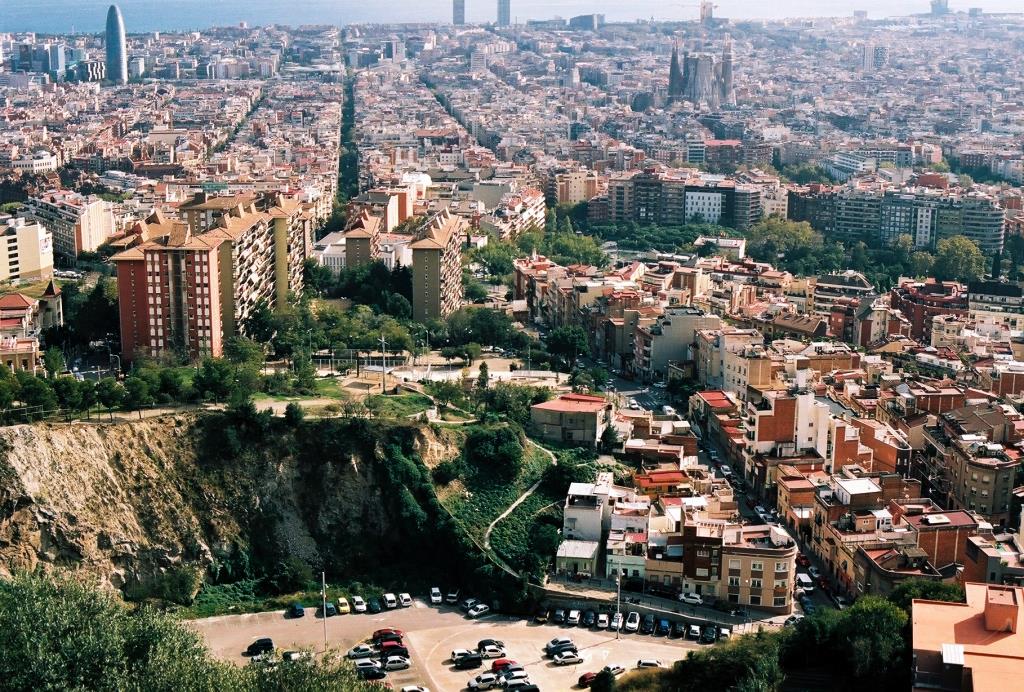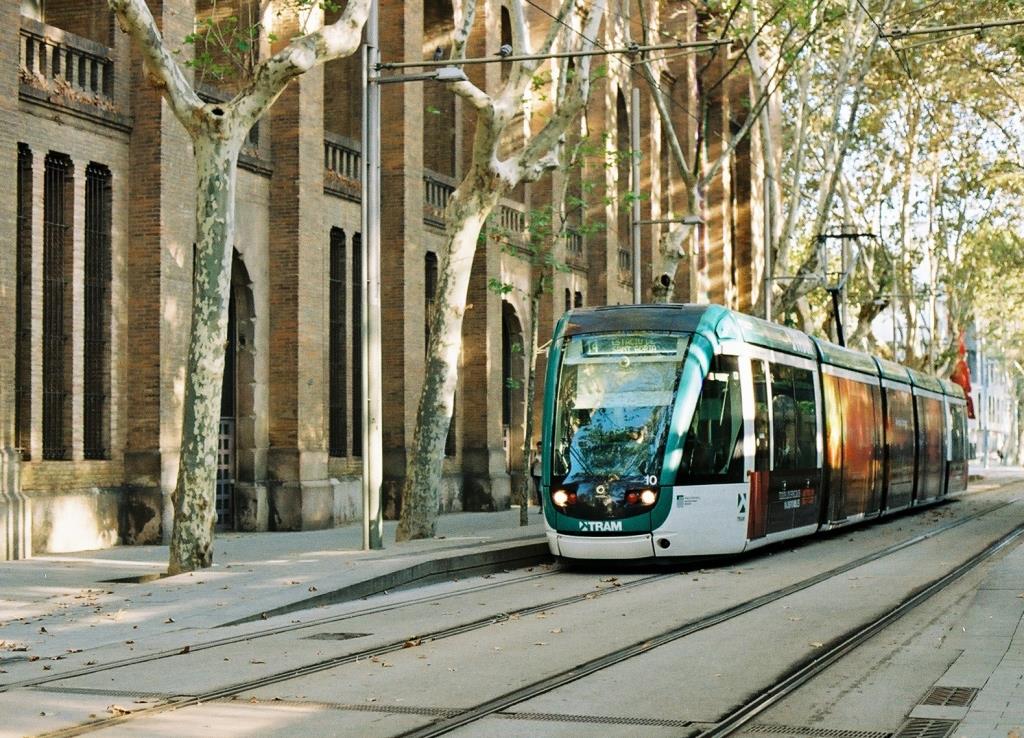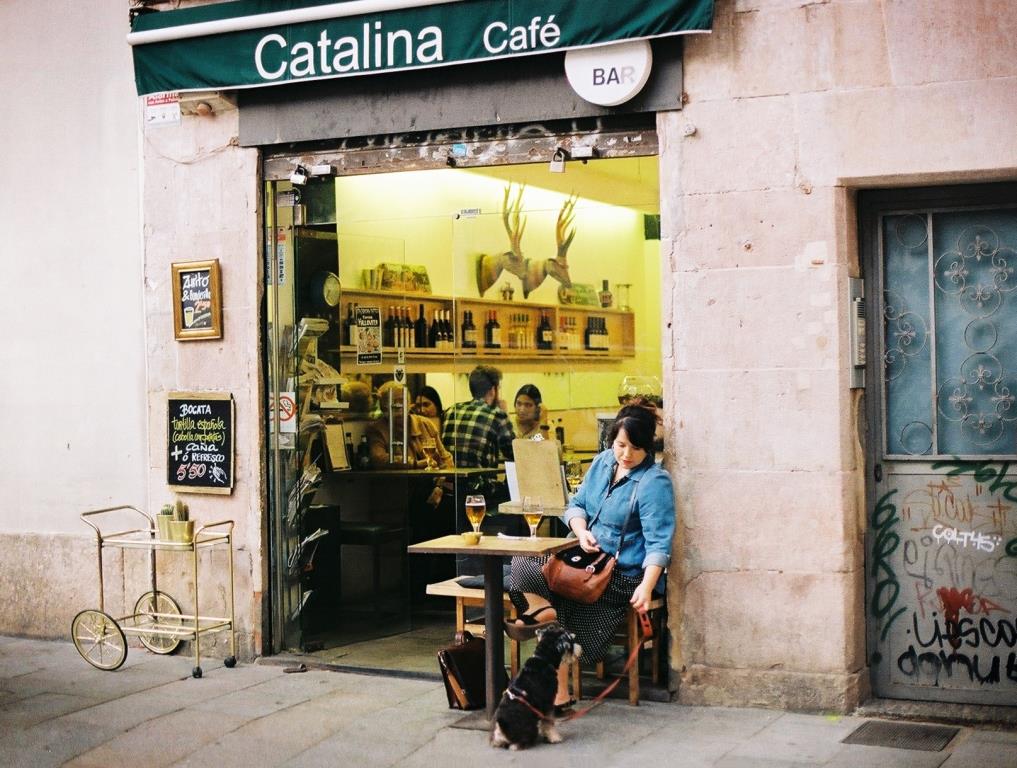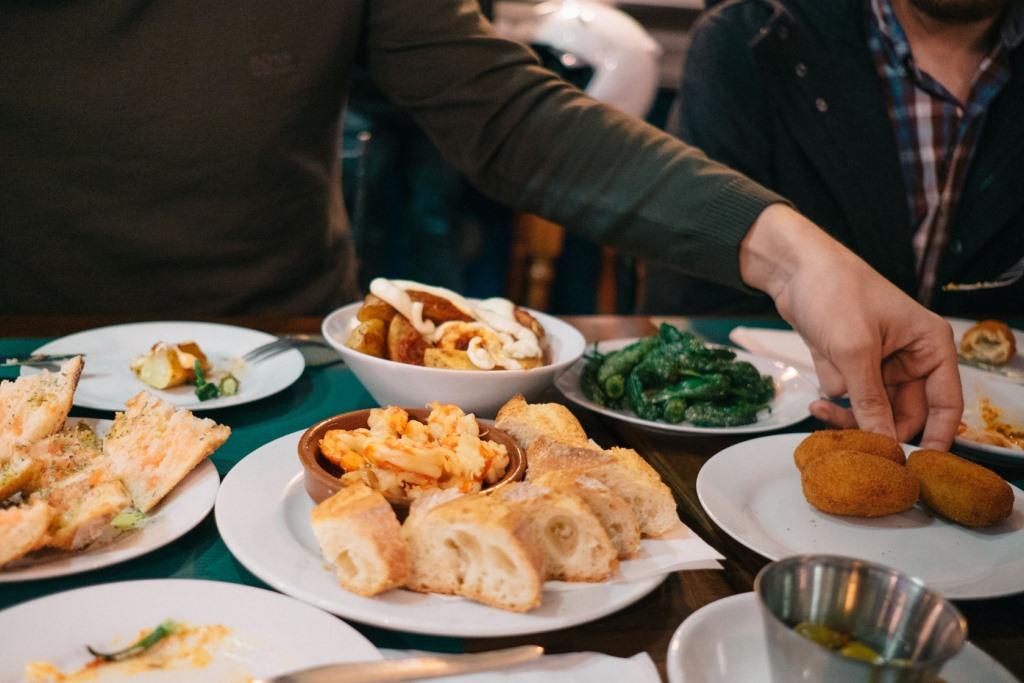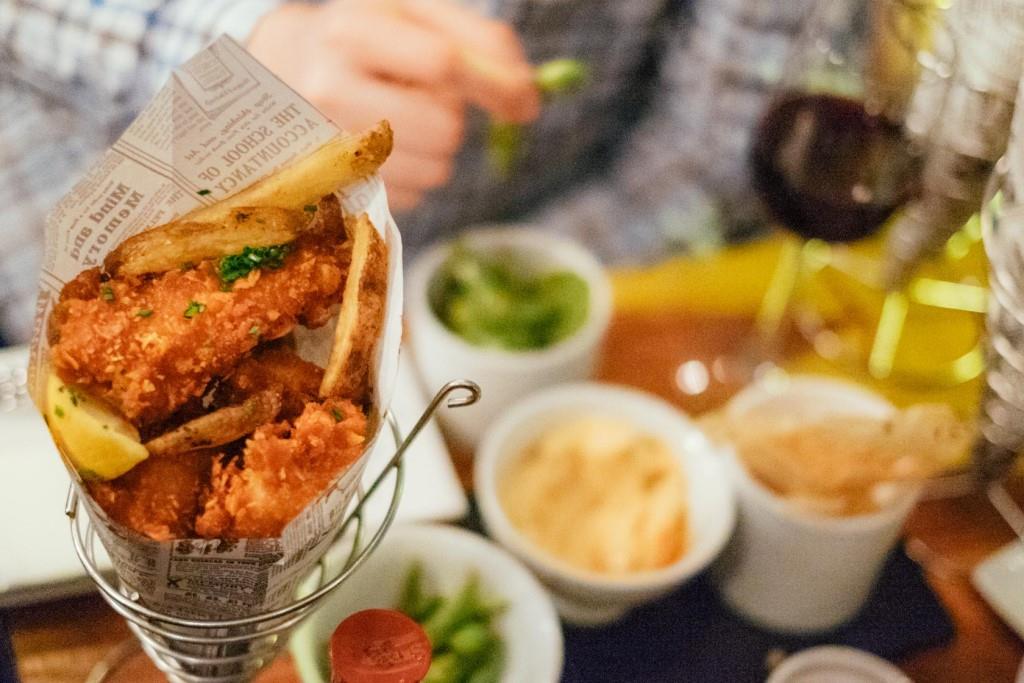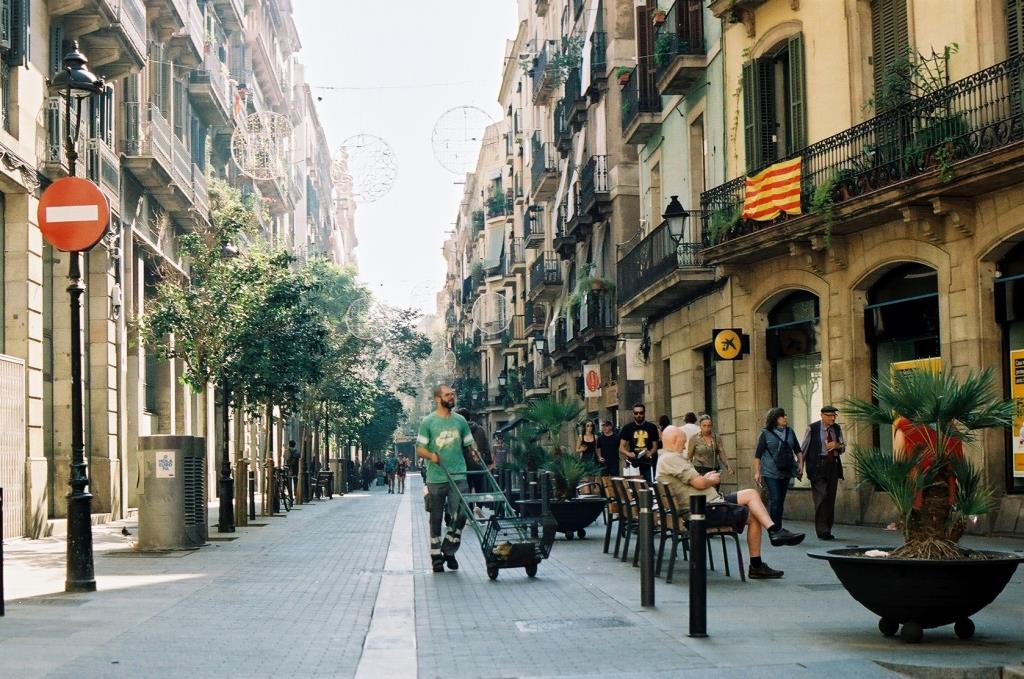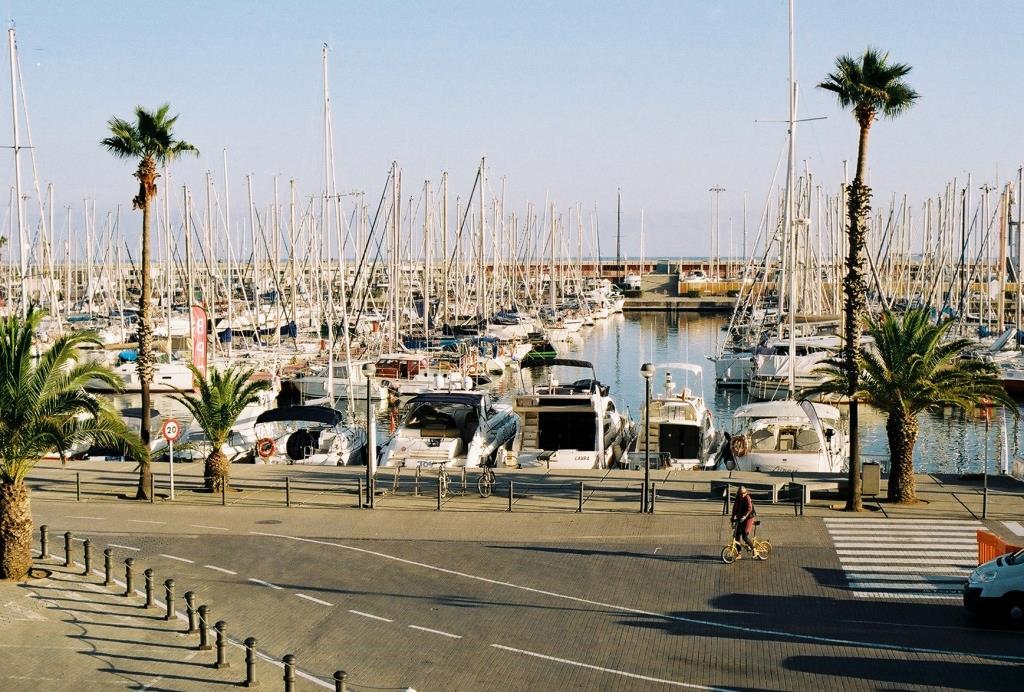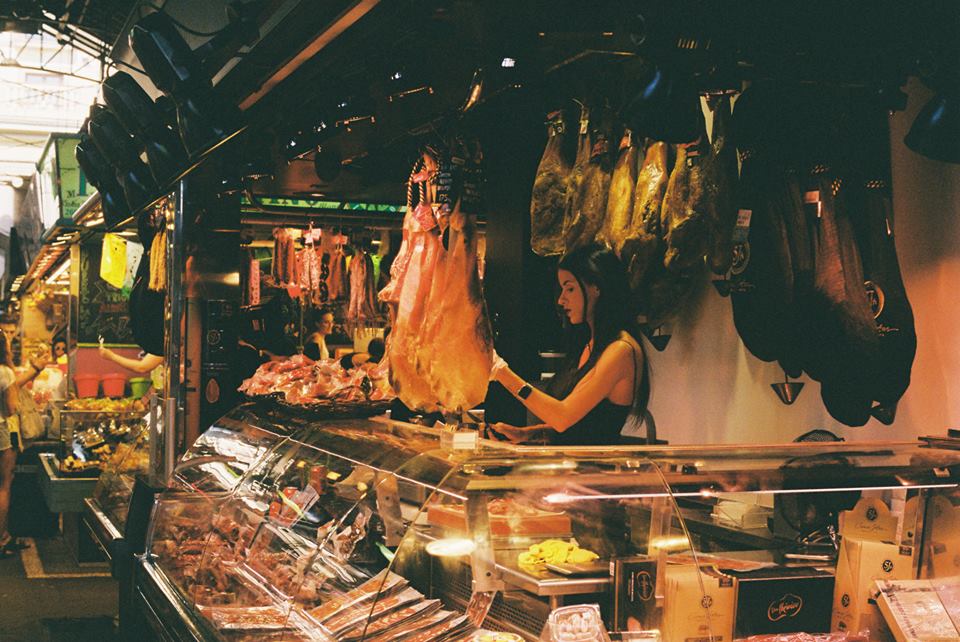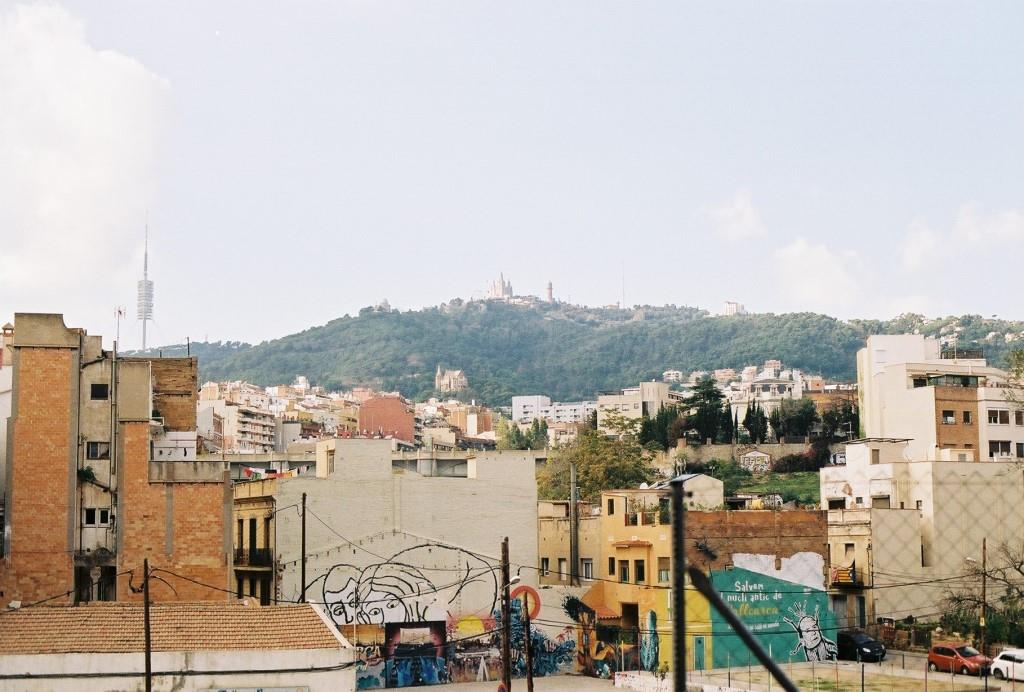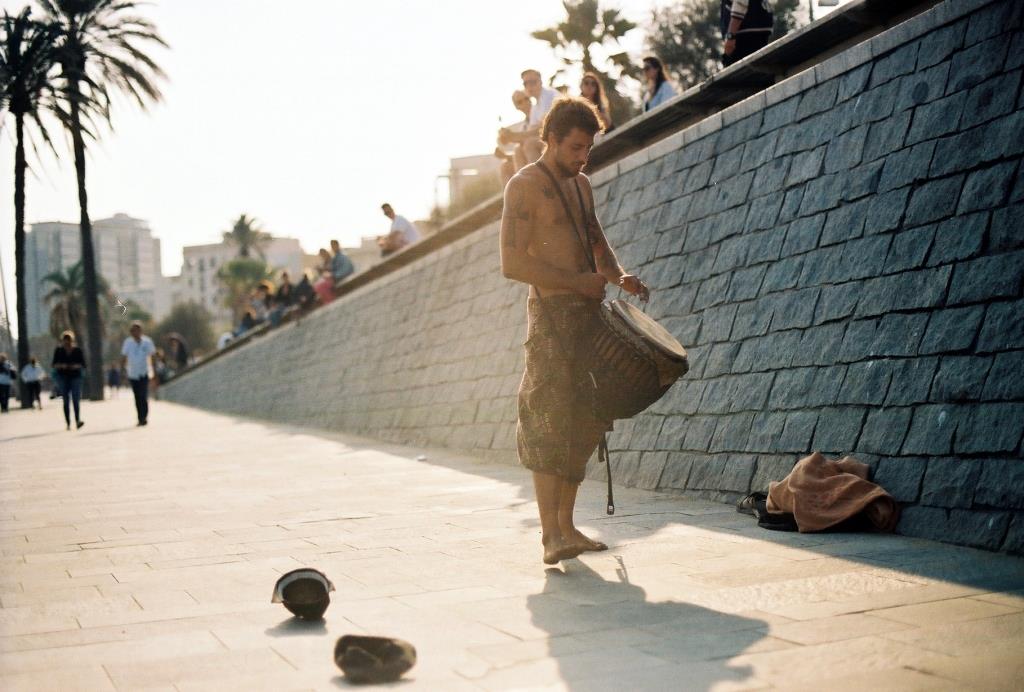Barcelona is consistently one of the five most visited cities in Europe. Anyone who had visited it before the tourist boom of the last five years noticed a metamorphosis that happened to the city – its transformation into a more frenzied, southern version of Amsterdam. This is why the local city hall is doing everything it can to preserve the spirit of old Barcelona by advocating for more cultural tourism. We decided to support the city authorities of the Catalan capital and give you even more non-tourist places and life hacks overheard by the Barcelona people. Keep our updated guide to this attractive city.
Barcelona Transportation
As before, the cheapest way to get to the capital of Catalonia is the low-cost Ryanair or Wizzair, which runs from Vilnius and Warsaw. In 3.5 hours, you will already be breathing the sea air and Instagram palm trees in Barcelona against the backdrop of the Collserola mountain range. In winter or spring, you can keep it within € 100 for a “round trip”, but in the season itself (from May to September) this amount doubles, and sometimes triples. A direct flight from hometown Belavia will cost € 106 for a one-way flight.
If you are going to use public transport, which is developed in the Catalan capital, like in no other city in the world, without thinking, buy a universal T-10 ticket with the corresponding number of trips for all types of transport for a little more than € 10 and remember: if you change the mode of transport in within 75 minutes (for example, changing from bus to metro or from tram to electric train), this is counted as one trip. Metro stations, connected by 11 lines, are literally at every corner in Barcelona. On Saturday, the metro operates 24 hours without interruption, on Friday – until 2 am, on other days – until midnight.
In addition, both from the first (T1) and from the second terminal (T2) of Barcelona airport you can get to the city by the ninth metro line at a separate rate (€ 4.5 per trip) or by the Renfe Rodalies train from the second terminal – this will be a little faster and in addition, you will arrive in the very center of the city at the Barcelona Passeig de Gracia station directly to one of Gaudí’s miraculous houses (Casa Batllo).
It is easy to get anywhere at night with the night buses. They are distinguished by a yellow color, like a taxi, and the letter N on the scoreboard. For example, N16 goes from the airport El Prat in Barcelona center with a final stop at Plaza Catalunya (‘s Plaça de Catalunya) .
Taxis in Barcelona are not very expensive – from € 2 per kilometer, depending on the day and time of day. A green light on the roof of a car indicates that it is free, while a yellow light indicates that it is busy. Do not forget that the total area of the city is three times less than the area of Minsk, so a distance of 5-7 km can sometimes mean a trip from the center to the nearest outskirts. Until recently, Uber in Barcelona was blocked – the taxi lobby did not allow the service to enter the local market, but in 2017 it had a Spanish alternative – the Cabify app.
Another convenient way to get around Barcelona and its suburbs are with the Renfe Rodalies trains that run along the coast to the northeast and southwest of the city, as well as from El Prat Airport (see above). Their competitors – another Ferrocarrils commuter train network – can come in handy if you decide to climb the holy mountain of Montserrat, one of the must-see places of power.
Tourist double-decker buses, of which there are a lot in Barcelona, are chosen by older people, although if you are too lazy to walk, you can choose a specific route and make yourself an express tour of the city’s main attractions in half a day.
Barcelona Accommodation
If this is your first time in Barcelona, then keep in mind that the capital of Catalonia is one of the five most popular tourist destinations in Europe. About 8 million tourists visit it annually (this is official and does not include Airbnb users ). That is, we recommend taking care of housing as early as possible.
The Barcelona City Hall at some point started a war with Airbnb after locals began to actively rent rooms to tourists, and large hotel chains gathered their thoughts and calculated the losses from this. The authorities promised to ban access to the site for residents of the city, but in the end, it did not come to this, and both parties managed to agree.
So, if you decide on Airbnb, the best areas to live in are Gracia, Eixample, El Born, Poble Sec, and Poble Nou. If you want exotic, extreme, and apocalyptic, you can rent a room in the multicultural area of El Raval. If you want to feel how the people of Barcelona lived in the Middle Ages, you are in the Gothic Quarter Barri Gótic… Just keep in mind that in summer its narrow streets acquire a rather specific smell and, in addition, attract a huge number of pickpockets, constantly prowling in search of onlookers-tourists. Those who want to get closer to the sea need to forget about Barceloneta and settle in Poble Nou, a former factory district on the old outskirts, which in the second half of the 2010s became a mecca for startups and other young and successful ones. Why not Barceloneta? Because it began to be perceived by the locals as nothing more than a trashy place with a large number of drunk tourists and endless petty thefts. At one point, Barceloneta’s eternal party reached such a level of noise that residents of the area were forced to take to the streets and hit the news around the world.
Hostels
Bed and Bike Barcelona (Carrer de la Diputació, 360) . Here you can rent a bike for € 7 per day and take it on a tour. Night in the common room – from € 26.
Equity Point Centric Hostel (Passeig de Gràcia, 33). One of three Barcelona hostels from the Equity Point international network. Located in a contemporary building close to Plaza Catalunya, the terminus of all airport buses. Prices start at € 17.
Casa Gracia (Passeig de Gràcia, 116) . The stylish hostel also doubles as an art gallery, hosting exhibitions from time to time. The large patio offers a live music concert.
Sant Jordi Hostel. Six hostels in different parts of the city, with a different concept (from a boutique hostel to a skateboarding hostel), but with equally eccentric inhabitants who flock to Barcelona from Asia, America, and Australia.
Pars Tailor’s (Carrer de Sepulveda, 146). Housed in the popular youth neighborhood of Sant Antoni, with a 1930s-style sewing workshop.
Hotels
Hotel Petit Palace Boquería Garden (Carrer de la Boqueria, 10) . Located 10 meters from the main tourist boulevard La Rambla in a small (by palace standards) real palace of the XIX century, the architectural heritage of Barcelona. It boasts its own garden with century-old trees, free bike rental, and iPads.
Hotel Pulitzer (Calle Bergara, 8) . From a rooftop bar, where local DJs often play, to a slow food restaurant and designer furniture. Despite its status, this boutique hotel has absorbed the indie teenage character of Barcelona the most. Private yoga classes, in-room massages, and a visit to the nearby pool and gym are available at an additional cost.
Room Mate Carla (Carrer de Mallorca, 288) . A chain of boutique hotels in different parts of Barcelona city center, where Carla, Emma, Anna, Pau, and Gerard can become your Barcelona roommates. The rooms are decorated in bright colors by interior designer Thomas Alia, whose idea was to use Mediterranean minimalism in decoration with a slight addition of color. Breakfast is served until midday and each hotel has rooftop bars with views of the most beautiful city in the world.
Hotel Brummel (Carrer Nou de La Rambla, 174) . Another boutique hotel is located at the foot of Montjuïc near the Greek Theater and the Miro Museum. Guests enjoy free yoga classes, half-day city bike use, and the hotel’s signature handbag. An outdoor pool, sauna, and a small private garden are some more reasons why you should stay here.
As a reminder, the most popular booking sites are hostelbookers.com, hostelworld.com, agoda.com, booking.com.
Barcelona Culture
In recent years, competition among those who conduct free excursions has intensified. Previously, the most popular place for freebies was the Travel Bar (Carrer Boquería 27, Liceu metro station). From there and now, excursions around the Gothic Quarter with an English-speaking guide begin daily at 11, 13, and 15 hours. As a thank you, you will have to give the guide € 3-5 at the end of the tour.
However, apart from the Travel Bar, Runner Bean Tours offers a wide variety of free tours. With them, you can see Barcelona by Gaudi, and learn about the birth of Barcelona anarchism, and listen to a night tour about the Holy Inquisition, torture, and punishment.
Let’s start with Gaudí’s Barcelona (don’t forget that in Catalan the emphasis is on “and”). A true genius and adherent of the Catalan idea rarely traveled outside Barcelona. But he managed to set such a high bar for local architects that students from all over the world still come here to study “frozen music”.
Sagrada Familia (Carrer de Mallorca, 401) . One of the most famous long-term construction projects in the world and the symbol of Barcelona should be completed only in 2026 – on the hundredth anniversary of Gaudi’s death. To go inside, buy tickets on the website and you will not stand in huge queues around the Sagrada. She’s as incredible inside as she is outside. The cheapest ticket will cost € 17. A ticket with a visit to the towers and a view of the modernist Eixample district, resembling a box of chocolates from above, costs € 32. For those who mistakenly call the Sagrada a cathedral, we add that Barcelona Cathedral (Pla de la Seu) is located in a completely different place and was built in the 15th century.
Sagrada, but better start your acquaintance with Gaudi’s masterpieces from the Palau Guell (Carrer Nou de la Rambla, 3-5), not far from the most popular walking street La Rambla. Then take the green metro line and reach the Passeig de Grácia station, where the famous Gaudí Houses stand on the street of the same name: Casa Batlló (Passeig de Grácia, 43) with a dragon skin facade and Casa Mila (La Pedrera) (Passeig de Grácia, 92), or a quarry that recently opened after a year-long restoration of the head façade.
Park Guel (Carrer d’Olot, 5) is another point of Gaudí, from the hills of which you can delight the eye with views of the city. Don’t forget to sit on Gaudí’s undulating bench and walk through the famous colonnade (free after 21.30). There is also the Gaudí House Museum with a collection of fancy furniture created by the hands of the master.
Be sure to take the time to stroll through the incredible Ciutadella Park with a fountain made by a young Gaudí.
Mount Tibidabo is the highest point in the city. You can get there from Plaza Catalunya on the special T2A bus or on the Vallvidrera or Tibidabo funiculars. On the mountain, there is the Del Sagrat Cor church, which can be seen from almost everywhere in the city, and one of the oldest amusement parks in Europe overlooking Barcelona. In addition, next to Tibidabo stands the TV tower ” Kalsarola ” – 288 meters in height, with an observation deck for the most curious.
Montjuic, or “Jewish mountain”, is a whole chest of nishtyaks. At the very top is the Fortress Museum (Carretera de Montjuic, 66) of the 17th century, which has gone through more than one serious turmoil. During the Franco dictatorship, Catalan political prisoners were held here. Now, from June to August, film screenings are held on Mondays, Wednesdays, and Fridays.
Below you will find a picturesque park with sports facilities built for the 92 Olympics and the Juan Antonio Samaranch Olympic Museum. There is also the famous pool from the video of Kylie Minogue overlooking the city, the Olympic stadium, where Freddie Mercury sang an ode to Barcelona, and the Sant Jordi arena, where the stars of the AC / DC level or Robbie Williams and Lady Gaga come.
Montjuïc is also home to the foundation of the world-famous Catalan avant-garde artist João Miró and the National Art Museum of Catalonia (MNAC) in a former royal palace next to Plaza de España.
If you go down the mountain by bus, take a look at the Barcelona analog of Strochits – Poble Espanyol – a Spanish artisan village and an open-air museum with examples of typical Spanish architecture from all regions of the country.
The best views of Plaza Catalunya are from the top floor of the El Corte Ingles shopping center (Plaça de Catalunya 14) . Now a pleasant gastro bar is located on the terrace with panoramic windows.
When you decide to run through the local museums, do not forget that every first Sunday of the month most of them are open for free.
The Picasso Museum (Carrer Montcada, 15-23) is the city’s most popular museum with early works by the artist and huge queues during the high season.
In terms of the number of visitors, only the FC Barcelona Museum (Carrer Aristides Maillol, 12) rivals it, which is located in the football temple of Barça – the Camp Nou stadium.
The Maritime Museum (Av. De Les Drassanes s / n) is housed in old shipyards. A large collection of instruments for marine navigation, maps of the world, old and modern ships.
CosmoCaixa (Carrer d ‘Isaac Newton, 26) is a science museum that has absorbed human knowledge about nature and space.
MACBA (Plaça dels Àngels, 1) is a hefty museum of contemporary art. The modernist museum building is easy to find among the typical old buildings of the most cosmopolitan area of Barcelona, El Raval. The steps in front of the museum are a favorite spot and mecca for skaters from all over the world. The museum has an excellent collection of 20th-century art from local and foreign artists. And the exposition is arranged in such a way that moving from hall to hall, you catch the connection between historical events in the region and the world and processes in art. In addition, MACBA hosts cool temporary exhibitions (you can check the poster here before your visit). Entrance € 11, for students € 8.80. And we also advise you to look into the excellent bookstore at the museum – there is a separate entrance to the store from the street.
You can continue the art tour at the CCCB Center for Contemporary Culture (Montalegre, 5). Here they organize detailed exhibitions on burning topics – for example, now the exhibition is devoted to the history of feminism and the study of female sexuality. For up-to-date information about events, follow here. A standard ticket costs € 6. There is also a good book at this center.
In the Museum of the History of Barcelona (Plaça del Rei) and the Museum of the History of Catalonia (Pl. de Pau Vila, 3 (Palau de Mar)), you can trace the development of the city and the region since the hoary antiquity and the Roman Empire. Wars, counterfeiters, history of the decline, and renaissance of the capital of the Mediterranean.
The Egyptian Museum with a collection of items that once belonged to the pharaohs is very popular among the locals.
The Chocolate Museum (Carrer del Comerc, 36), which can be left for dessert, is, for some incomprehensible irony, housed in a former convent. The museum was founded by the Guild of Confectioners of the city.
Design Museum (Plaça de les Glories Catalanes 37) . The young museum is located in the original building next to the Torre Agbar in the Poblenou district. Each floor is dedicated to a specific theme: space design, industrial design, and cultural heritage, printing, and fashion. Entrance – € 6. The museum is closed on Mondays.
And if you find yourself in the Poble Nou area, check out the Simon 100 space. The Simon factory, which produces lighting fixtures, switches, and various control systems for smart homes, has an experimental showroom. Local designer Antoni Arola has created a space that looks more like a gallery – here, at the magic click of the same switch, neon light, rainwater, or pictures on the walls come to life. Another reality!
Fans of winter activities, snowboarding, and the mountains of Barcelona may be interested in the neighborhood of Andorra – a dwarf principality in the middle of the Pyrenees on the border with France, which has several rather popular ski resorts. In addition, Andorra is a whole duty-free country, a duty-free zone, and an offshore paradise. By the way, the first king of Andorra was a native of Belarus Boris I (Skosyrev).
Another ski resort near Barcelona is the Pyrenean La Molina. The first ski school in Spain was once opened there.
Barcelona Local cuisine & Fast Food
It was not only the ability to play football and build cities that made Catalonia famous throughout the world. The local cuisine, both simple and one of the most innovative, aptly characterized by the words “mar and mantanha” (“sea and mountains”), is another reason why you absolutely must come to the most independent region of Spain. The Pyrenees, the Mediterranean, and the Ebro Delta have always pampered Catalans with first-class wine, rice with fresh seafood, and numerous embutidos (sausages) and Jamon (local ham).
Tapas are typical Spanish snacks for wine, vermouth, or beer. The name comes from the word “tapa”, which in Spanish means “lid”, that is, what can be used to cover the glass. Tapas are hot or cold. Typical Spanish tapas are patatas bravas (pieces of potatoes with a spicy sauce or aioli sauce), Russian salad (Ensalada Rusa), pa amb tomaquet (bread smeared with garlic and tomato), anchovies, chipirones (little squid), and many other goodies. from some names of which active salivation begins.
The concentration of tapas bars per square kilometer in Barcelona is off the charts. To cover the most iconic ones, we need to write a separate guide, so we chose only a few bars that we think are the most authentic.
Las Delicias (Carrer Muhlberg 1) . Getting to Las Delicias takes a bang on the bus, but you get authentic tapas served by cheeky Almodovar-aged Catalan waiters and incredible views of Barcelona at night. Juicy anchovies, Ensalada Rusa, Galician octopus, or tamaket – everything is very simple but delicious at home. If you want something more serious, order a steak with Roquefort sauce.
El Jabalí (Ronda Sant Pau, 15) . Tapas bar near Paral·lel metro station in a once bohemian neighborhood. Classic tapas, friendly waiters, and perfect Jamon are the real trademarks of this place. Order croquetas, romance squid, and bombs. If the outside bar does not seem very attractive to you, do not be alarmed.
Casa Lolea (Sant Pere Mès Alt, 49) . For those who are too lazy to get out of the old town, we recommend this tapas bar with incredibly delicious tapas and the best sangria in town. After a meal, you can take it with you in a beautiful designer bottle and even bring it home as a souvenir. Although we certainly recommend drinking it at sunset by the sea. This bar is also famous for its vermouths, so you can hang out here for a very long time and then get lost in the narrow streets of the El Born area. During high season, you may need to book a table in advance.
Perikete (C / Llauder, 6) – Cool tapas bar near Barceloneta Beach. A noisy party crowd at tiny tables and huge bundles of Jamon (which you can taste right there and then) hang from the ceiling. There are a variety of tapas on the menu, from oysters to patatas bravas.
El Cocinero de Damasco (Templers 2, corner with Palau, 08002) is officially the city’s best lamb and turkey kebab, and one of the best falafels is made in this small place in the Gothic Quarter and belongs to the Syrian Salem. The place is open for three hours in the afternoon and three hours in the evening, and, as a rule, a line of locals gathers here. Therefore, if you decide to get to know Salem, have fifteen minutes of patience. To fully experience Syrian hospitality, do not take your food with you, but sit inside.
Bismillah Kebabish (Carrer Joaquin Costa, 22) . The legendary kebab house, which is far from the first year among the three best places in the city with falafel and kebab and is located on one of the busiest streets of the Arab quarter. The trick is that the cakes are rolled out and baked literally before your eyes.
Ramen-Ya HIRO (Carrer Girona, 164). The city’s best ramen – Japanese noodle broth – is made here. If you decide to come here to recuperate on the morning after a Saturday party, you should come at least half an hour before the opening – too many people who want to quickly form an impressive line.
La Taguara Areperia (Carrer Rec, 10) . Arepa is a typical Venezuelan fast food. Chicken, beef, legumes, or guacamole between two corn buns. Pour it all over with exotic Latin American fresh or indulge yourself in “cacapu” – a sweet corn pancake. Ideal for a bite to eat at around € 5.
Rekons (Carrer de Comte d’Urgell, 32) . Locals say that the best Argentinean pies, or empanadas, are made here. Located in the Sant Antoni hipster district of Barcelona. You can order take-away empanadas, or add salad, a finger-thick piece of meat, a huge glass of juice and destroy it all on the spot. The value for money, quality, and quantity made the place truly popular.
Blai Tonight (Carrer Blai, 23-25). One of the best Basque taverns in the city is located on the equally legendary Bligh Street in the Poble Sec area. The street, about 500 meters long, has gained popularity due to a large number of pintxos sandwiches, a typical snack of the Basque Country. Just sit down at the bar and taste whatever is at your fingertips. One pintxo – € 1. Local Moritz beer in Blai Tonight is also very ok.
Foc i Oli (Carrer Aribau, 91) . The worldwide trend for burgers has not bypassed Barcelona. The feature of this restaurant with craft burgers, created by French-Uruguayan comrades, is that you yourself see the process of cooking, you can choose ingredients from various types of bread and meat, or add vegetables and sauces to taste. Be sure to try the El chivito sandwich, named by chef Antonio Bourdin as the best sandwich in the world.
Bar Lechuga Superpizzas (Carrer Escudellers, 33, 08002 Barcelona) . There is no better place for a light snack or a slice of pizza while walking in the Gothic Quarter. There are two more Italian-owned pizzerias on the same street, and these guys are absolute favorites among the locals. Be sure to order the goat cheese pizza.
Bo De B (C / Fusteria 14) – According to many locals, this tiny place makes the best sandwiches in Barcelona. The owner from Morocco enchants with his hospitality and smile. If you manage to sit inside, be sure to take a salad with potatoes and Tzatziki sauce. Don’t forget to drink some mint tea at the end and hug the owner.
Bocatas de Sultan (Calle Joaquim Costa, 56) is a location for the frugal and unassuming. Here they serve potatoes in bags for € 1, on top you can pour as much ketchup, mayonnaise, or all at once.
Barcelona Cafes & Restaurants
Local restaurants have a lot of competition. That is why almost each of them offers a business lunch menu when for € 10-13 you can order two dishes with dessert and drinks. Among the dishes for which it is worth going to a restaurant, we recall black rice (Arroz negro) in cuttlefish sauce – a typical Catalan recipe, Spanish paella (with seafood or chicken), as well as cream Catalana – a local dessert baked with a crust of sugar on top, analog French creme brulee.
Pudding (Carrer Pau Claris, 90). The interior of the cafe is in the style of “Alice in Wonderland”. Nice location for “Bonjour Paris!” – croissant with jam and butter and fragrant coffee with milk (café con Leche). Huge pieces of typical cakes (cheesecake, carrot cake) and French quiche with chicken or zucchini for vegetarians. Around € 8-10 per person.
Buenas Migas. Network cafes in different parts of the city. “Hutka-savory” in Barcelona style, but instead of gold, here is focaccia with butifarra. Salads, pesto, baked eggplants, cakes – all products are of very high quality and in the € 5 range. For breakfast, order focaccia and a set of jams for € 1.
FrescCo is a chain of buffet restaurants serving fresh fruit, seasonal soups, pasta, salads, and grilled meats or fish. You give € 10-12 and fill your belly while you have strength.
Los Caracoles (Carrer Escudellers, 14), or “snails”, one of the oldest restaurants in Barcelona (founded in 1835) gets its name from the specialty. At the entrance, instead of the head waiter, you will be greeted by rosy chickens spinning on a grill and sellers for some unknown reason (the place is located in the Gothic Quarter). Be sure to try the local duck, seafood, and of course the signature dish.
La Fonda (Carrer Escudellers, 10) . Located on the same street as Los Caracoles. Nice place to finally try paella or black rice. Catalana cream is so delicious here that it is eaten with a spoon. Modernist interior, white tablecloths, and an average of around € 20 per person with wine and starters. If you don’t come to the opening, get ready to stand in line 15-20 minutes long. In the afternoon you can drop by for a business lunch.
Fábrica Moritz (Ronda Sant Antoni, 41) – beer restaurant on the site of the former brewery of the Frenchman Moritz. Modern design, iron tables, and beer tanks in the basement, where you can go down and watch the brewing of artesian beer in real-time. For starters – typical tapas or German sausages with potato salad, which is cooked here tenderly, not German. € 15-20.
runch & Cake. Being the hardcore guys and hand cooking all the dishes over low heat using only the finest ingredients are the foundations of the philosophy of this incredibly popular place. All food is prepared only from environmentally friendly organic products, and it looks so delicious that your subscribers will definitely save these photos to their favorites.
El Pachuco (Carrer Sant Pau, 110) . Imagine the tastiest nachos you have ever tasted. Introduced? Now multiply your sensations by a million and don’t hesitate to come to this little Mexican bar-restaurant to make sure that all the Mexican food you’ve tasted before was just a pathetic parody of it. Of course, you will have to stand in a half-hour line and sometimes feel the touch of the back of a neighbor sitting behind, but believe me – it’s worth it.
La Paradeta (Passatge de Simó, 18; Avinguda del Parallel, 46; Carrer del Consell de Cent, 318 – only 8 points in the city) is a budget fish restaurant (which looks more like a dining room). The system is simple: you choose fresh seafood on the counter, they are immediately weighed and cooked. We advise you to check the opening hours of a particular institution on the website.
Puerta de Europa (Carrer de Sepúlveda, 187) . You can drop in here for lunch if you just want to have a tasty meal and chat with local retirees. The prices are quite pleasant, the service is unobtrusive.
Espai Joliu ( Carrer de Badajoz, 95) is a stylish coffee shop and flower shop in the Poblenou area. Stop by here for a good cup of coffee and a cactus in a homemade terracotta pot. In the meantime, you can enjoy your Kemex with the creative industry workers from the offices next door, you can browse the latest Kinfolk.
Barcelona Bars
Perhaps only in Barcelona, you can see locals absolutely calmly drinking beer at half-past nine in the morning before work or at one in the afternoon during lunch (la hora de comer) on the terraces of numerous local bars. It seems that Catalans drink a lot, but in fact, they drink for a long time. For them, the drinking process is, first of all, a pleasant conversation about everything in the world: about football, politics, sex, or about the latest neighbor’s gossip.
So the Catalans are also champions in the slowest drinking of small glasses of 0.33 beer (caña) or vermouth. As for sangria, this summer drink has recently gained a reputation as a tourist destination due to its popularity among visitors. Another local drink, besides wine, which is worth paying attention to is the aforementioned vermouth.
In Barcelona, there are a lot of specialized places (vermouths) with light or dark varieties of homemade vermouth, and among the locals, the tradition of drinking vermouth, once forgotten after the fall of the Franco dictatorship, is very popular – la hora del vermut – right before lunch to whet the appetite. As for the main Spanish drink – wine, here you can generally get lost in the choice. Rioja, one love!
Can Paixano (Carrer de la Reina Cristina, 7) . Legendary dive bar, where all guests in one rush throw themselves in cava (this is the name of the Catalan version of champagne). You’ve been to Barcelona and haven’t been to Can Paixano – consider that you spent your holidays in vain. Of the drinks, there is only homemade sparkling wine (from € 1.5) – pink or white, homemade burgers, and country sausages, which are fried right in front of you, and this grunting sound is ideally mixed with the hum of the chatting crowd. For vegetarians, there is an option to have a snack with cheeses, artichokes, or pickles.
Els Sortidors del Parlament (Carrer Parlament, 53) . Be sure to find Rue Parlament for the most stylish bars and cafes in modern Barcelona. Els Sortidors has many barrels of North Catalan wine and local vermouth. Feel free to open the tap of the barrel you like best and order tapas.
La Libertária (Carrer Tallers, 48) is a popular street bar with vintage clothing stores. The walls are decorated with the history of the anarchist Barcelona of the 1930s-1940s. Posters, photographs, drawings, and newspapers – sometimes you feel here like in a museum. Be sure to try the local vermouth and meet the Barcelona people, who are becoming more and more here closer to the weekend.
Dry Martini by Javier De Las Muelas (Carrer Aribau 162-166) . A true gift for gin and martini lovers ranked in the top 50 bars in the world, as well as in the top 3 gin bars with about 90 types of gin. Ask the bartender, or Paco’s Spanish cocktail for their signature dry Martini, or order anything – you won’t regret it.
Old Fashioned – Gin Tonic & Cocktail Bar (Carrer Santa Teresa, 1) is a cocktail bar for those who decide to walk their evening dress in Barcelona or get proof that there are people in the city who know how to look elegant. Over the past three years, the bar has literally won the title of the city’s best cocktail venue.
Paradiso (c. Rera Palau, 4) from the outside looks like a stylish eatery with pastrami sandwiches. You may not even immediately notice the small door, which looks more like a closet. She leads you to one of the most interesting speakeasy bars in Barcelona. In 2018, Paradiso was shortlisted for the top 100 bars in the world. Creative, but not ridiculous-looking, serving drinks, nice interior, and not very high prices for a cocktail bar of this level.
Rubi Bar (Carrer Banys Vells, 6 bis) is located in a narrow maze of old streets in the El Born district. Huge selection of gin, and mojitos generally for € 3.5. Quite friendly and chatty bartenders. On Friday and Saturday, many English-speaking residents of the city gather here – you can make useful contacts and practice your English.
Arena Bar (c / Carassa, 4) is a local bar hidden deep in the El Born area, where local artists and musicians love to gather. Two pool tables, live music on Fridays. It works until 03:00.
Nevermind (Carrer Escudellers Blancs, 3) . The must-see bar, the epitome of the Seattle wave, Cobain, and skateboarding craze for kids. The walls are decorated with graffiti, skate videos are played on the projector, and boards from boards are used instead of shelves. It is very logical that the prices for such a place are quite democratic. € 1 for a beer at happy hour.
First Bar (Carrer Rauriс, 9) . The highlight of the place is that all the walls are covered with small stickers with wishes, paradoxical thoughts, greetings, and confessions of the bar visitors. Here you can leave a message for your friends who are going to visit Barcelona. Be sure to try the amazing cocktails with the right amount of alcohol.
Espit Chupitos (Passeig de Colon, 8) . “Chupito” – in Spanish “glass” or “shot”. The place offers an absolutely crazy menu of shots – over 500 – with set fires, rallies, and other show elements. € 2 for a chupito. Our recommendations are the chupito Amnesia, Kalashnikov, and Monica Lewinsky.
Manchester (Carrer de Milans, 5) . For those who are nostalgic for the 1970s-1980s British rock. Menu titles include New Order, Joy Division, The Smiths, and other post-punk icons. Music and audience are appropriate.
Polaroid (Carrer dels Còdols, 29) . Greetings from the 1980s: Tetris, videotapes, even Alf. Cheap drinks and free popcorn.
La Plata (Carrer Mercé, 28) is a democratic small bar near the port, consisting of six tables and specializing in fried sardines with beer. Bono from U2 loves to come here when he comes to Barcelona.
Cyrano (Carrer d’Aribau, 154) . A popular spot among students. You pay € 4-5 and they give you an empty glass and a bottle of martini, whiskey, rum, vodka, or whatever you want. You pour yourself, so after one drink you can find yourself already decently at home.
33 | 45 (Carrer Joaquin Costa, 4) – Perhaps this bar has become popular among skaters, students, local party-goers, and all kinds of freelancers primarily for its Berlin-style atmosphere. There are cozy sofas on which you can perfectly relax while drinking beer or vermouth or get to know the Raval bohemia.
Two Schmucks (Carrer de Joaquin Costa, 52) is one of those bars where the feeling of visiting old friends never leaves. An incredibly positive atmosphere created by bartenders and waiters, the cocktail menu changes every month depending on the season, and their Sunday brunch is a separate topic of conversation. In 2018, the place was included in the top 100 best new bars in the world.
Centric (C. de les Ramelleres, 27) . This bar in the Raval area has been operating since 1940. The atmosphere is appropriate: a lot of wood, wise local grandfathers sipping red, a lot of tapas to choose from.
Barcelona Clubs
Even Catalans admit that Madrid is the most popular city in Spain. True, the capital of Catalonia seeks to keep up with this issue, and due to its multiculturalism, it seems even more interesting to wander around the clubs in Barcelona.
Razzmatazz (Carrer Pamplona, 88) . The most famous live spot for punk, indie, rock, and metal musicians from around the world, as well as the largest club in the city with five separate halls – each for its own musical direction.
Jamboree (Placa Reial, 17). A jazz club with half a century of history in the heart of the Gothic quarter in Plaza Reyal, which, despite its respected age, now specializes in hip-hop and R’n’B.
Apolo (Carrer Nou de la Rambla, 113) . The legendary Nasty Mondays party is held here on Monday. The music changes according to the day – reggae, funk, indie, or rumba. Consists of two halls and is actively used for live shows.
Harlem Jazz Club (Carrer Comtessa de Sobradiel, 8) . One of the oldest jazz clubs in Barcelona, where you can even bring your parents to dinner. Cultural program every day, cheap.
Marula Café (Carrer Escudellers, 49) . A place for vinyl lovers. Afrobeat, jazz, soul, disco and many other things that the Almighty can send you if you get to Marula Cafe.
La Terrrazza Barcelona (Av. Marqués de Camillas, s / n) . It is notable for the fact that the first open-air city rave took place here. Located in the heart of the layout of the Spanish village Poble Espanyol. Some of the best summer get-togethers are held here.
RED58 (Consell de Cent, 280). Opened in January 2017, a small but cozy club with the best sound system in the city and always an excellent selection of the very cream of the electronic underground.
Input High Fidelity Dance Club (Av. De Francesc Ferrer I Guàrdia, 13). Another location for electronic music lovers, located in the far corner of the already familiar Spanish village of Poble Español. Good music and the right atmosphere are guaranteed.
Tablao Flamenco Cordobes (Ramblas, 35) . A good reason to remind yourself which country you have come to and go to the traditional Spanish flamenco. According to the organizers, one of the best in the world.
Robadors 23 (Carrer d’En Robador, 23) . On Thursdays, you can listen to real non-commercial flamenco from the depths of the famous Spanish passion. Located on the once most dysfunctional street in the Arab quarter.
ATIPICO (48 Via Trajana Esc B Piso 8 Num 2a) . If you want to see how the outskirts of Barcelona live, visit this creative space, which is also a bar, restaurant, gallery, and place for the most unforgettable rooftop parties.
Barcelona Shopping options
Every fashionista, if she hears that you are going to Spain, will tell you that this is the birthplace of the brands Zara, Pull and Bear, Mango, Desigual, and hundreds of other little-known fashion designers. The best time to shop is during the winter (January to late February) or summer (early July to late August) sales. Do not forget also that on Sunday all the shopping centers and shops, in addition to ” Maremagnum » (Moll d’Espanya) and supermarkets with the Pakistanis do not work.
The city’s most famous food market is Boqueria on La Rambla, where smells alone make it easy to lose celibacy. You can find absolutely everything in Boqueria – from caramelized insects to oysters and fresh juices. According to legend, even 72 varieties of salt are sold here. Part of the market works like cookery, where you will have fresh sea creeps toasted and poured wine or vermouth.
If you want to buy some antique hat from a Catalan grandmother or a poster from the Spanish Civil War, then the Encants flea market (Placa de Les Glories Catalanes) is open every day except Sunday.
Mercat Gotic (Avenida del Portal de l’Angel) is a cross between a flea market and an antique shop in the square in front of Catedra.
El Corte Inglés (Plaza Catalunya) . A large network of Spanish shopping centers. Perfumes, clothes, sporting goods, travel goods, clothes again and even sprat in tomato in the department of delicacies from all over the world.
Portal de l’Àngel is the ideal place if you do decide to shop for famous Spanish brands. All shops are on the same street. Carrer del Duc street is another location for real fashionistas (-ts) – sneaker shops, designer clothes, skate shops, and a little mass market.
Ale-Hop (Carrer de Sant Pere Mes Alt, 6) . A chain of stores with amusing accessories. A good place to choose an inexpensive Barcelona gift for friends or family.
El 7 Peus (Travessera de Gracia, 142) . Cheap antique shop in the Catalan district of Gracia. Vinyl, old books, furniture, paintings, and cool watches.
Cash Converters (Carrer de Floridablanca, 143) are quite popular “commissions” scattered throughout the city. If you have a desire to buy a used bike or bass, this is the place for you.
FC Botіga (Carrer de Jaume I, 18) . A shop for those who don’t want to buy Messi’s T-shirt from Pakistanis on a nearby street. The network of official stores of the Barcelona football club.
Holala Holala (Plaza Castella, 2) . Huge designer vintage clothing store. You can find everything from socks to carnival costumes. Plus design gadgets for the interior.
Bookshop Laie the CCCB (Carrer de Montalegre 5) – Shop at the Center for Contemporary Culture (CCCB) is specialized in the literature about art and philosophy, and in addition, you can buy cool gifts.
Barcelona | Life Hacks
- The locals mostly do not speak English, so be prepared to communicate with you mostly in Spanish.
- Only small shops close for siesta. From about 2 pm to 5 pm.
- On the Barcelona subway (especially on the yellow and green lines), you need to keep a close eye on your phone and wallet. In summer, there are many tourists, which means there are many pickpockets.
- Never order food in tourist spots like La Rambla and restaurants around the Sagrada Familia.
- Decent wine starts at the supermarket from € 3-5.
- Don’t swim on the city beach of Barceloneta. Better get on the train and get off in about 30 minutes at some coastal stop.
- Don’t buy beer or mojitos from street vendors – they store their drinks in sewers.
- Remember that Barça is a football club, and the abbreviated name of the city is Barna.
- Relax, take your time, smile, love yourself and your life, and just enjoy every moment of it. Try to capture the feeling of Barcelona magic that attracts people from all over the world here – and take it with you.
Important Links for Barcelona Travel
- Timetable for the movement of buses and metro.
- timeout.com/barcelona – Time Out’s guide to all city activities.
- butxaca.com – all cultural events of the city on one site.
- lonelyplanet.com/spain/barcelona – Lonely Planet guide.
- Timetable for the movement of suburban trains.
- likealocalguide.com/barcelona – a guide from the locals.
- eltenedor.es/restaurante+barcelona – discounts on restaurants.
- barcelona.salir.com – Discounts on restaurants, movies, clubs, bars and more.





